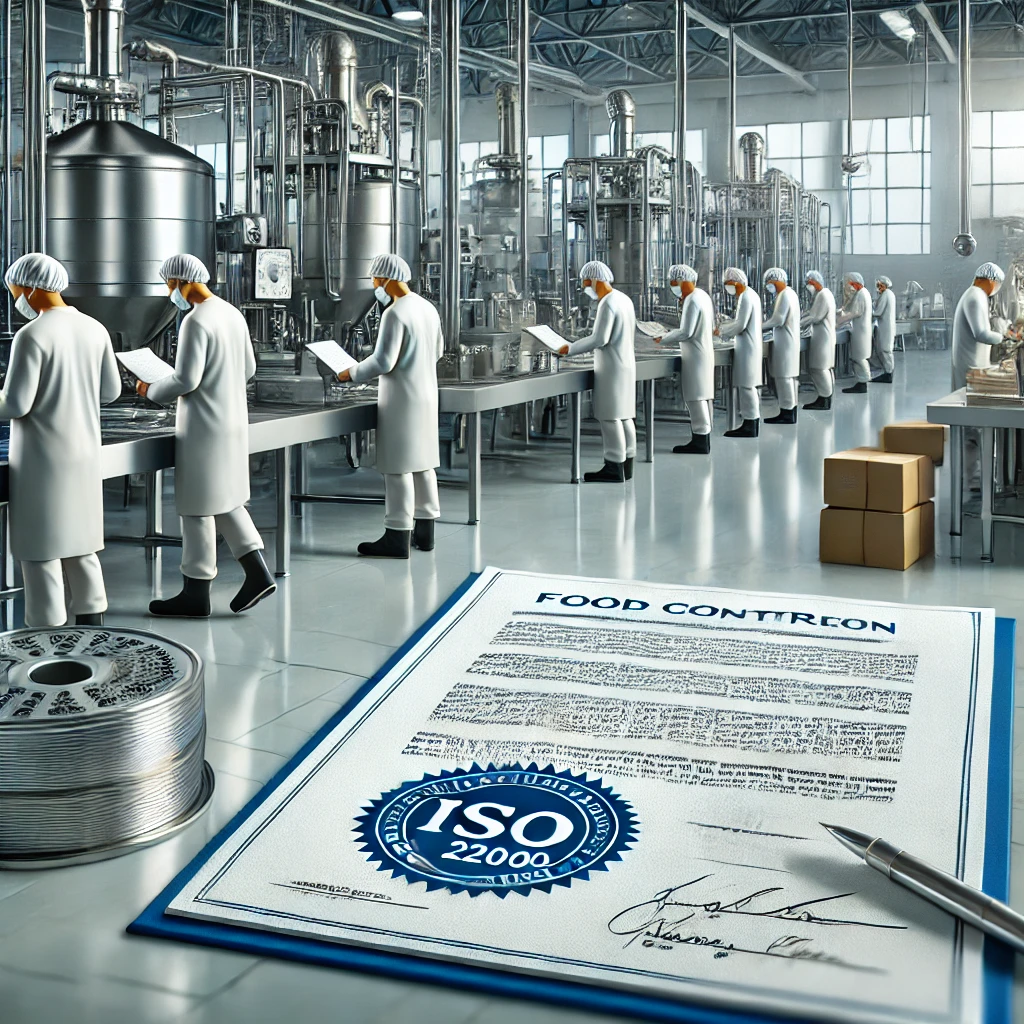
The ISO 22000:2018 standard establishes the requirements for implementing a Food Safety Management System (FSMS) in organizations that are part of the food chain. In this blog, we will explore the key concepts of the standard, as well as its implications for ensuring food safety within businesses.
Food safety is a priority for companies operating in the food industry, especially those exporting products to international markets. ISO 22000:2018 is a powerful tool for managing food-related hazards and ensuring that final products comply with safety regulations. In this article, we break down some of the key points of this standard and its relevance to the industry.
ISO 22000:2018 establishes the requirements for implementing a Food Safety Management System (FSMS). This system allows organizations to identify, prevent, and control hazards related to food safety, ensuring that products are safe at all stages of the process, from production to consumption.
ISO 22000:2018 is based on the High-Level Structure (HLS), a unified framework for ISO management systems. This structure facilitates integration with other management standards, such as ISO 9001, and ensures greater consistency and uniformity in the implementation of management systems.
According to ISO 22000, food safety refers to the absence of hazards that could cause adverse health effects to consumers when food is prepared and consumed according to its intended use. A Food Safety Management System (FSMS) allows for the control of these hazards and ensures that products are safe for consumption.
Clause 4.1 of the ISO 22000 standard requires organizations to identify and understand the external and internal factors that affect their ability to meet the requirements of the FSMS. These factors include the regulatory, technological, social, economic, and cultural environment, as well as market conditions and available resources.
ISO 22000 also emphasizes the importance of identifying and meeting the needs and expectations of interested parties in the food supply chain. Examples include:
The ISO 22000 standard requires organizations to identify risks and opportunities that may affect food safety. Once identified, they must plan actions proportional to the magnitude of the risk or opportunity, integrate them into the management system, and monitor their effectiveness.
A hazard in the food industry can be biological, chemical, or physical, and must be controlled to prevent adverse effects on consumer health. Examples include:
Top management plays a fundamental role in the implementation and maintenance of the FSMS. They must demonstrate leadership and commitment by establishing clear policies and allocating resources to ensure that the system operates effectively. Furthermore, they should be involved in risk assessment, system review, and internal and external communication regarding food safety.
To achieve food safety goals, organizations must establish clear, measurable, and time-bound objectives. They must also allocate adequate resources, define responsibilities, and monitor progress using performance indicators. Continuous improvement is essential to ensure that the management system remains effective and aligned with the requirements of ISO 22000.
Prerequisite Programs (PRP) are basic conditions and activities that ensure a hygienic environment adequate for controlling food safety hazards. Examples include cleaning and disinfection control, pest control, and ensuring a safe water supply.
On the other hand, Operational Prerequisite Programs (PRP-O) are specific controls applied at critical points in the production process. Unlike PRPs, PRP-Os focus on reducing significant hazards within the operational process.
A CCP is a step in the production process where control can be applied to prevent, eliminate or reduce significant food safety hazards. An example is the pasteurization of milk, where heat is applied to eliminate pathogens such as Salmonella or Listeria.
Within the ISO 22000:2018 standard, pest control plays a fundamental role in the management of food safety. Pests, such as insects, rodents, and other unwanted species, pose a biological risk that can affect food safety by contaminating products or facilities. Effective pest control is an essential Prerequisite Program (PRP) to ensure a hygienic and adequate environment in any company involved in the production, processing, or distribution of food.
Pests can compromise not only the quality of the final product but also compliance with food safety regulations, affecting consumer trust and the ability to export to international markets with high regulatory standards.
At Grupo Miteri, we understand the critical importance of pest control within the framework of ISO 22000:2018. Our service not only guarantees the effective elimination of pests but also works to prevent their presence through comprehensive and personalized solutions. We ensure compliance with the highest food safety standards while providing the necessary documentation to help our clients demonstrate regulatory compliance during audits and certifications.
We have highly trained personnel and advanced technology that allows us to conduct pest inspections, treatments, and monitoring quickly and effectively. Additionally, we are in the process of obtaining ISO 22000:2018 certification, which further strengthens our ability to help you implement food safety management systems that include a solid pest control plan.
When you choose Grupo Miteri, you are opting for a quick and effective solution while ensuring that your company meets international food safety requirements, enabling you to maintain the safety of your products and comply with global market demands.
Regresar al listado